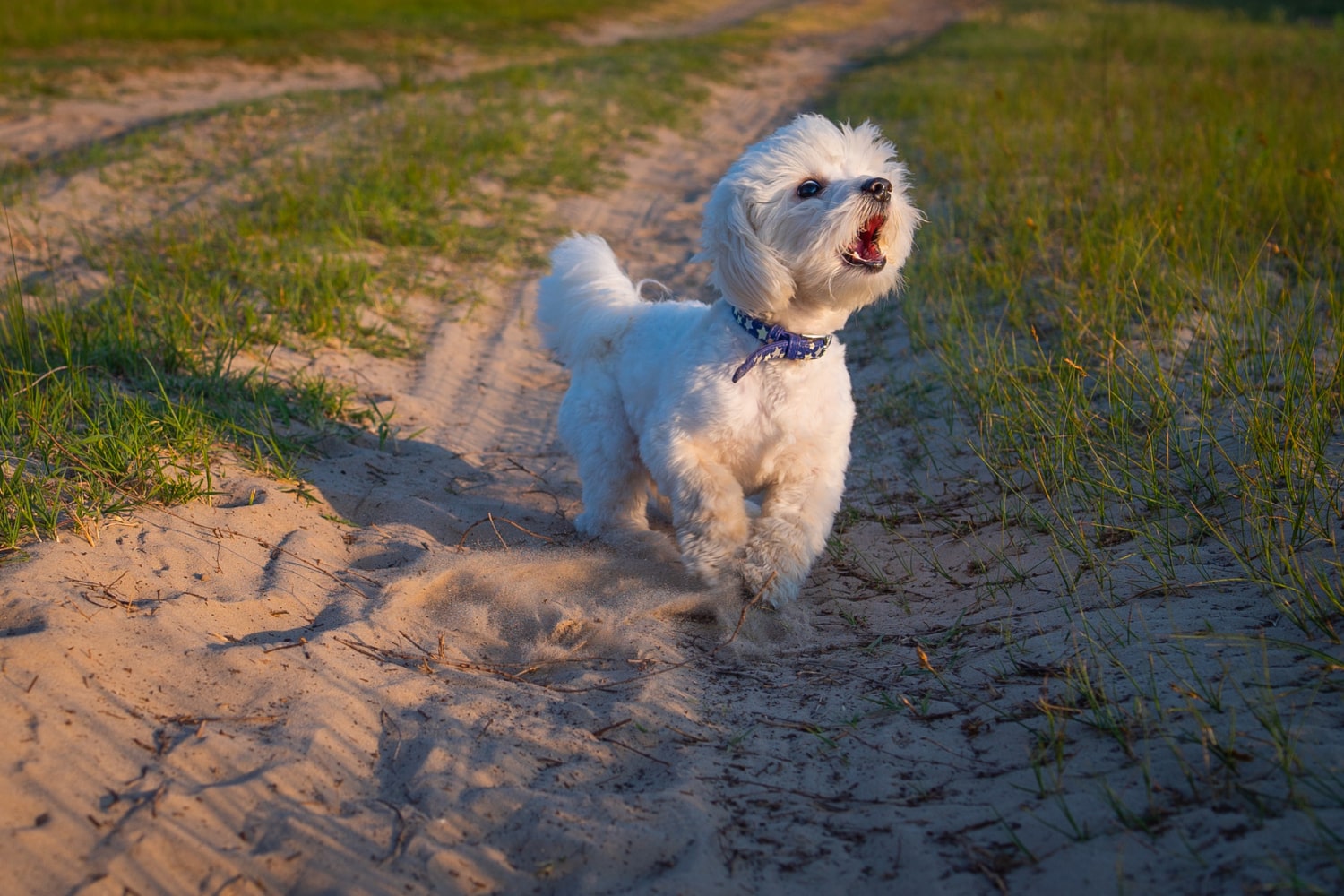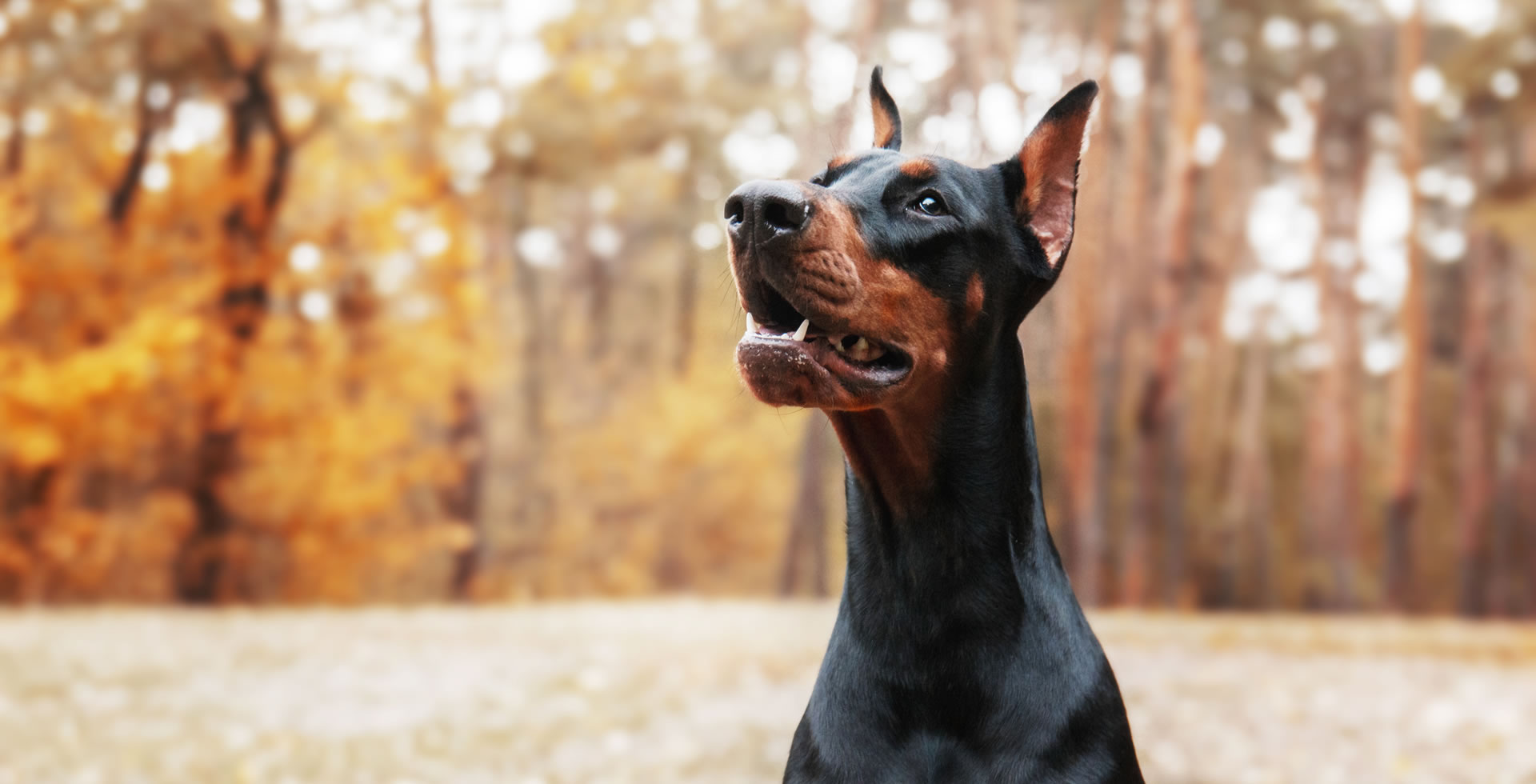Dogs bark. Some bark more, some bark less. Barking, just like whining or growling are normal means of communication for dogs. There are many different types of barks, depending on what the dog is communicating in a given situation. The difference is in the pitch of the bark wishing the vocal range of the individual dog, the sound modulation, the duration of the barking event, the frequency of barks, the accompanying body language.
Barks also vary across breeds, ages and individuals. Some breeds tend to be more vocal than others. Puppies have a higher pitch and generally bark more often for attention and then in confrontation. Here are a few different types of barks and some quick tips on how to manage if dog barking is a problem. However, if the problem is serious, you should look for behaviourist advice for your specific situation.
ALARM BARKING
Alarm barking is when a dog detects a sudden change in their environment such as a sound of someone outside their home or an unexpected object or sudden movement, like a black flappy bin bag left on the street. Breeds that are used for guarding stock or property are likely to bark in alarm and can be very sensitive and distrustful toward new things or unexpected changes.
This would include border collies and shepherds. This bark is usually intermittent and includes pauses during which the dog will be listening. It is loud and can be high pitched (more panic) or low pitched (more attitude).
Tip: block the view if the dog is barking at something they see out the window. Recognise the typical triggers, such as a postman or neighbour’s child walking back from school. Be prepared with you treats and each time the trigger appears, give your dog a treat as soon as the dog sees the trigger but before he barks. Don’t scold your dog, reassure them.
- ALARM BARKING is when a dog detects a sudden change in their environment.
- DANGER! Dogs who are used for guarding are likely to bark in alarm.
- REASSURE your dog, don’t scold it, and teach them the way.
BARKING TO DETER THE INTRUDER
Dogs also bark in an attempt to intimidate or deter an intruder, for example a postman or a scary looking person with shopping bags or a beard. This is not the same as alarm barking, which was just an instant reaction to a startling stimulus. This kind of barking is directed at the intruder and is a threatening display, with the aim to make the intruder move away. Any dog that feels threatened may do that, some typical examples include German shepherds, terriers, Dachshunds, Chihuahuas, Spitzes, and bichons.
This barking will often continue until the dog is either feeling safe or if the barking didn’t deter the intruder and the dog needs to resort to another form of dealing with the stressful situation (cowering, appeasement, running away or attack).
Tip: the dog is barking at something they are afraid or nervous of. They are not being naughty, this is just their reaction to a perceived threat. The solution to this problem is not to stop the barking but to change how the dog feels about the scary thing. Try to avoid putting your dog in this situation or distract the dog with food/toys or happy talk, to stop the behaviour from getting worse until you can look for professional help.
- DOGS BARK to intimidate or deter an intruder.
- HERDING BREEDS do this to keep order and peace.
- MOVING OBJECTS such as; cars, bikes or other dogs having fun.
BARKING AT MOVING OBJECTS
Some dogs will bark at moving objects like cars, bikes or other dogs that are having fun. Again, that is typical of herding breeds who seem to like to keep order and peace in groups. This is usually a few barks and maybe a little chase.
Tip 1: Teach your dog a happy distraction noise or a name call and reward generously. Whenever your dog is about to bark and chase a moving object, call them and reward for switching the attention to you
Tip 2: Set up a training scenario where you can easily control your distance from the moving object. Have your dog on a lead, a clicker in your hand and some tasty treats. Each time the dog looks at the moving object, click and treat. Take it slowly and stay far enough from the trigger that the dog is happily taking the food and easily disengaging from the trigger. The next step is to increase the duration for which the dog is watching the object. Withhold the click for a second or two while the dog is observing the moving object calmly. If the dog looks back at you by themselves, feel free to click and treat, but it’s not a requirement. The requirement is simply that the dog is calm and not barking or chasing. Move closer over a number of sessions. If this is a severe problem and you are losing control over your dog, seek professional help.
BARKING FOR ATTENTION
Some dogs will bark when they want something, for example to be let out for a toilet break or when they want some of your dinner or your attention. There is also excited barking before going on a walk or before you throw their tennis ball. Some dog’s breeds that typically do this are terriers, beagles and Belgian Shepherds.
Tip: Teach the dog a different behaviour for getting attention or asking for something. You can teach them to sit to have their lead clipped on or before you throw the ball. You can install a bell for them to ring if the need to go outside. Play impulse control games to develop better focus when excited.
- FOR ATTENTION some dogs will bark when they want something.
- EXCITED BARKING before going on a walk or before you throw their ball.
- TYPICAL BREEDS that do this are; Terriers, Beagles and Belgian Shepherds.
PLAY BARKING
Dogs may also bark during play with other dogs or with people. It may sound like friendly excited barking and is usually an invitation to play or a vocalisation in the context of goofy and happy play behaviour. Sometimes the sound of the bark itself may be low and growly but it will be accompanied by playful body language.
This may include loose body, lack of tension, bending the body in a sideways, bending the neck to look back at the partner, sideways movements, relaxed tail and ears, smiley or goofy face, play bows. This type of barking is part of some dogs’ play style.
Tip: This is usually not a problem behaviour, but if this kind of barking is a problem in your house, you may need to prevent play and keep the dogs busy separately until they can play freely outside.
- LOW & GROWLY barks may be accompanied by playful body language.
- DOGS may also bark during play.
- FRIENDLY excited barking is an invitation to play.
LONELY BARKING
Some dogs bark when they are bored or anxious about being left alone. Barking is one of the behaviours that dogs may perform to release stress and get attention. Other typical behaviours in this context may include chewing or destroying things with their mouths, digging or scratching at the door in an attempt to get out or pacing or chasing their own tail. Any breed of dog can display this behaviour at any stage of their life.
Tip: Reduce the time the dog is alone to their comfort level. Use dog walkers, dog minders and doggie daycares and keep your dog busy while you’re away. Practise settling down and calmly enjoying a kong or a bone away from you. Depending on the severity of the problem, you may be able to solve it with some management to relieve boredom or you may need professional help if your dog is suffering.







Leave A Comment